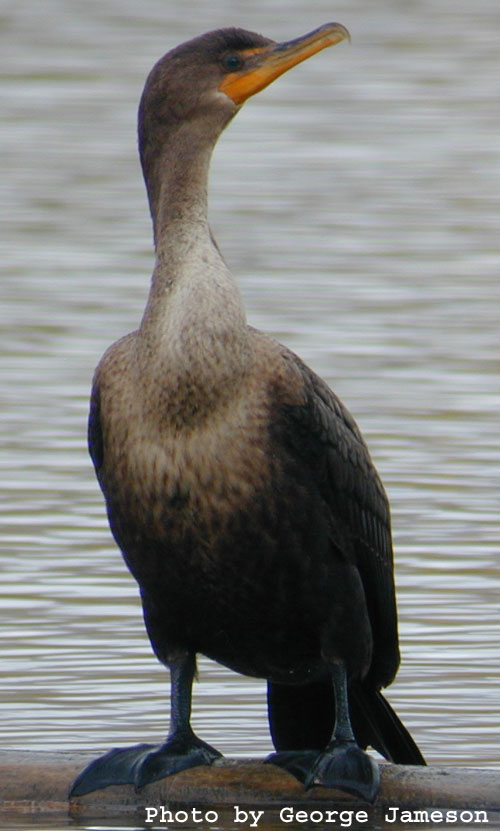Life at the Lake
a diary of living at a small lowland lakeWHAT IT'S LIKE

Early moonrise over Lake Ketchum
|
Archive Search |
| Links |
|
and s-integrator |
BUDDHA IS A CORMORANT

Close up of a Zen Cormorant
360
Reading last night in one of my favorite books, The Essential Haiku, Versions of Basho, Buson, & Issa, edited by Robert Hass, I came across the following cormorant poem by my favorite Zen Buddhist poet, Issa:
Children imitating cormorants
are even more wonderful
than cormorants.
- - Comments ()
...
WHAT ARE THE BIRDS OF WINTER?

Cormorant sitting on a snag, contemplating his next fish dive
359
Well, the cormorant certainly is one of them. They arrive here at the lake as stragglers, but soon find others of their kin, perhaps in dumb obedience to the adage of birds of a feather, etc. And soon there is a pod of them, a flock in the center of the lake.
I always think of them as a snooty bird, with their nose (beak) tilted up in the air, in the manner of that old New Yorker cartoon of the pompous gentleman with the monocle, though I know, I know, that this is a biological trait, a physiological one, and to see anything else in it is carrying the pathetic fallacy to a pathetic level.
The cormorant is a fisher eater, plain and simple. Offer him or her anything else and the gift will be met with disdain. They swim along, looking heavenward, and suddenly one or the pod of them will quickly and neatly invert and be gone. One to two minutes later they will begin to pop to the surface like large corks.
Rarely do they seem to have caught a fish, however. Much as the neighborhood osprey emerges from his private quest with a live fish in his beak. So seldom is it, in the case of both cormorant and osprey, that it seems more of a diving game each plays that a dead-serious quest for food.
Meanwhile the cormorant cruises the center of the lake, looking a bit oblivious to us human occupants along the shoreline. Occasionally he (or she, as the case may be, since the cormorant doesn't have specific gender traits) rears back on his hind legs, as it were, and fluffs out his feathers, I suppose to dry them, or to arrange them more satisfactorily, more comfortably. He will do this once or several times until briefly satisfied with the arrangement, after which he will resume his snooty cruise.
Looking up like that, I ask, how can he see into the water where his next meal hopefully is coming from?
Well, he can't, and must depend on his underwater vision to find a fish and and snare it in that wicked beak, with its downward tweak that must be so helpfully deadly.
- - Comments ()
...